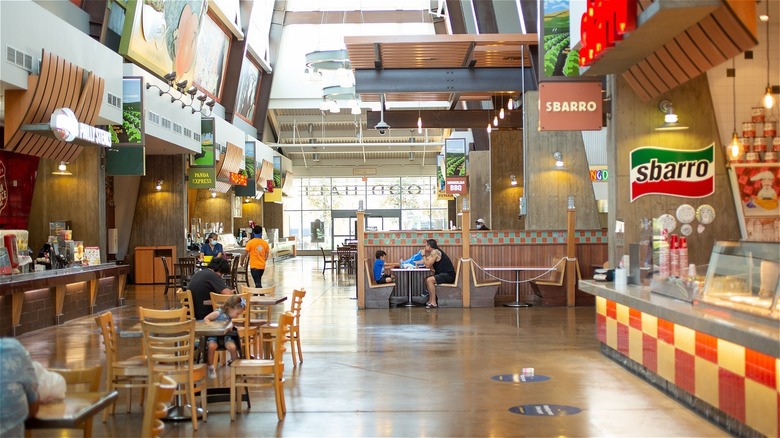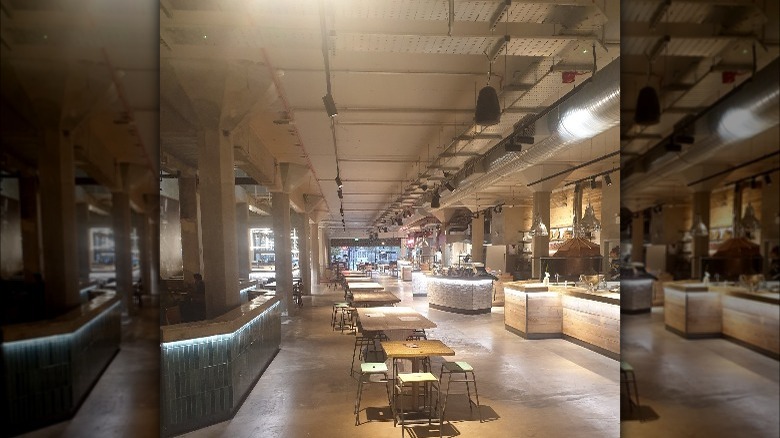Food Courts And Food Halls Aren't Exactly The Same Experience
Shopping at the mall can work up quite the appetite. Good thing for hungry H&M and Samsonite shoppers, most malls come equipped with a food court. A good food court is typically beaming with fast-food options like Chick-fil-A, Subway, Panda Express, and other food court classics like Auntie Anne's and Sbarro — enough to curb anyone's post-retail therapy appetite.
In the same way shopping can leave you hungry, so too can a long day at work, which is why your co-worker may have asked you to join them for a bite after work at your local food hall. There you'll find an assortment of restaurants offering cocktails, Italian pasta, authentic sushi, or a local Mexican-fusion hot spot — all arranged in individual stalls, just like a food court.
However, if you've eaten at both a food court and a food hall, you may find yourself wondering exactly what the difference is between the two. After all, both have dozens of restaurant options with an open-floor seating plan not assigned to any one particular business. Although they boast a similar business concept, the differences come down to restaurant quality and social interactions.
The key differences between food courts and food halls
Think of a food hall as a posh iteration of a food court. Compared to a food court, food halls offer more upscale restaurant options. Rarely will you find a Cinnabon in a food hall. Instead, you can find local craft vendors with expansive, creative menus that reach beyond the threshold of common road trip institutions like the Sonic you might find at your favorite mall's food court.
Food halls are a social hot spot. People go to food halls for first dates, anniversaries, and celebration dinners alike — something you're not as likely to congregate for at a food court. Many food halls offer access to boozy beverages, and if you're lucky, you might even catch some live music or trivia. On the other hand, food courts typically don't offer alcohol or entertainment.
Another difference between the two is their popularity. As online shopping and e-commerce take over the in-person retail experience, food courts are suffering to stay in business. When there's no one shopping at the mall, there's no one to stop in for a quick meal at the food court. Forbes even published an article with the headline "Mall Food Courts are Dying" — not exactly great publicity for the once-popular dining concept. Contrary to its predecessor, food halls have soared in popularity, and research from Technavio says the food hall market is expected to grow to $71.69 billion by 2026.
Whatever the differences may be, both dining concepts have the capacity to keep you full and satiated.

